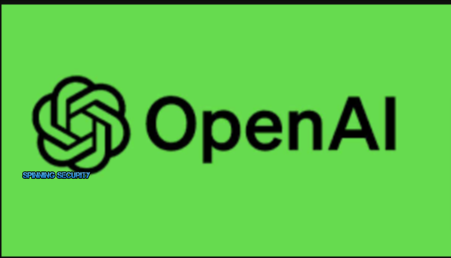GPT-4 is a deep learning model that can generate human-like text by predicting the next word or phrase based on the context of the preceding words. It uses unsupervised learning, which means it can learn from large amounts of text data without being explicitly programmed or labeled by humans. GPT-4 is expected to be even more powerful than its predecessor GPT-3, which has already demonstrated impressive abilities in language understanding, translation, summarization, and even creative writing.
New Features of GPT-4
According to the latest reports from OpenAI, GPT-4 will have several significant new features that can enhance its performance and versatility. Here are some of the most notable ones:
Multilingual Capabilities
GPT-4 will be able to understand and generate text in multiple languages, including low-resource languages that have limited training data. This means that GPT-4 can potentially enable cross-lingual communication and knowledge transfer, as well as facilitate the analysis of multilingual data.
Common Sense Reasoning
GPT-4 will be equipped with better commonsense reasoning abilities, which means it can generate more coherent and plausible text that reflects the real-world knowledge and causal relationships. For example, GPT-4 can answer questions such as “Why do birds fly?” or “What happens when you mix oil and water?” based on its understanding of physics, biology, and chemistry.
Improved Training and Fine-tuning
GPT-4 will have a larger capacity and more efficient training algorithms than GPT-3, which means it can learn from even more diverse and complex text data. Moreover, GPT-4 will allow for more fine-tuning, which means it can adapt to specific tasks or domains by being trained on smaller, task-specific datasets.
Potential Applications of GPT-4
Given its enhanced capabilities, GPT-4 has the potential to revolutionize various industries and domains that rely on language processing or understanding. Here are some of the potential applications of GPT-4 that we envision:
Chatbots and Customer Service
GPT-4 can be used to develop more sophisticated chatbots and virtual assistants that can understand and respond to natural language queries or requests in multiple languages. This can improve the efficiency and effectiveness of customer service, e-commerce, and other online interactions.
Content Creation and Marketing
GPT-4 can be used to generate high-quality content, such as articles, product descriptions, and social media posts, that are tailored to the target audience and optimized for search engine rankings. This can save time and cost for content creators and marketers, and improve the engagement and conversion rates of the audience.
Education and Training
GPT-4 can be used to develop personalized and adaptive learning materials, such as textbooks, quizzes, and simulations, that can adapt to the learner’s level, preferences, and cultural background. This can enhance the accessibility and effectiveness of education and training, especially for learners with diverse needs and backgrounds.
Scientific and Technical Writing
GPT-4 can be used to generate scientific and technical reports, such as research papers, patents, and documentation, that are accurate, concise, and understandable to both experts and laypeople. This
can improve the communication and dissemination of knowledge and innovation, and accelerate the pace of scientific discovery and technological advancement.
Creative Writing and Art
GPT-4 can be used to generate original and imaginative works of literature, poetry, music, and visual arts that can inspire and entertain the audience. This can challenge the boundaries of human creativity and expression, and foster new forms of cultural production and consumption.
Implications for AI and Society
The development of GPT-4 raises several ethical, social, and political issues that need to be addressed by researchers, policymakers, and the public. Here are some of the most pressing concerns:
Bias and Fairness
GPT-4, like its predecessors, can reproduce and amplify existing biases and prejudices in the training data, such as gender, race, and class stereotypes. This can lead to discriminatory outcomes and reinforce systemic injustices in society. Therefore, it is crucial to ensure that GPT-4 is trained on diverse and representative data, and that its outputs are audited and evaluated for fairness and impartiality.
Privacy and Security
GPT-4, as a language model, can potentially reveal sensitive information about individuals or organizations, such as personal identities, financial transactions, or trade secrets. This can pose risks to privacy and security, especially if GPT-4 is used for malicious purposes, such as phishing, fraud, or espionage. Therefore, it is important to establish strong safeguards and regulations to protect the confidentiality and integrity of data and communication.
Employment and Education
GPT-4, as a powerful tool for language processing and generation, can disrupt and transform many jobs and industries that rely on human communication and creativity. This can lead to both opportunities and challenges for workers and learners, depending on their skills, adaptability, and access to resources. Therefore, it is necessary to prepare for the potential impacts of GPT-4 on the labor market and the education system, and to provide adequate support and retraining programs for those affected.
Conclusion: GPT-4 and Beyond
GPT-4 is a remarkable achievement in the field of NLP, and a testament to the power of deep learning and unsupervised learning. Its new features and potential applications can unlock new frontiers in language processing and understanding, and enable new forms of human-machine interaction and collaboration. However, GPT-4 also poses challenges and risks that need to be addressed through responsible research and development, ethical governance, and public engagement. As we move towards the era of AI and machine intelligence, let us ensure that we use these tools to enhance human welfare and dignity, rather than to undermine or replace them.
- Understanding Backflow Testing and Annual Fire Alarm Inspections: Essential for Safety and Compliance - April 1, 2025
- Preamplifiers – Significance, Types, Benefits - January 10, 2025
- The Science of Bass: Understanding How Subwoofers Work - January 10, 2025

